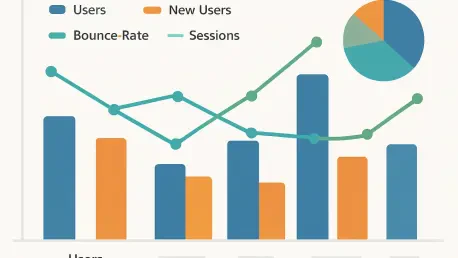In a move that has sparked interest among digital marketers and analysts, Google Analytics recently unveiled a subtle yet significant update on November 19, 2025, by renaming its long-standing “Cost Data Import” feature to “Campaign Data Import.” This change, while purely terminological, underscores a deliberate effort to better reflect the feature’s expansive role in capturing a wide array of campaign metrics beyond just financial figures. From clicks and impressions to cost data across non-Google advertising platforms, the updated name aims to mirror the comprehensive nature of what this tool offers in today’s multifaceted marketing environment.
This adjustment is not an isolated tweak but fits into Google Analytics’ broader strategy to evolve alongside the increasingly complex demands of digital advertising. As campaigns sprawl across diverse channels like social media, email, and beyond, the ability to centralize performance data within a single platform has become indispensable. The shift in nomenclature highlights a more holistic perspective, encouraging users to see the feature as a gateway to full-spectrum campaign insights rather than a narrow cost-tracking tool. For those immersed in Google Analytics 4 (GA4), this update prompts curiosity about potential impacts, yet the assurance is clear: no operational changes accompany the new name, and existing workflows remain unaffected.
The context of this renaming is enriched by a series of enhancements rolled out throughout 2025, showcasing Google’s commitment to refining its analytics capabilities. With expanded data sources, streamlined import processes, and direct integrations with major platforms, the feature has grown in utility, making the updated name a fitting capstone to a year of progress. This development also hints at future possibilities, positioning Google Analytics to stay ahead in the ever-shifting landscape of marketing technology.
Understanding the Name Change
Why the Shift from Cost to Campaign?
The decision to transition from “Cost Data Import” to “Campaign Data Import” is rooted in a desire for greater clarity and alignment with the feature’s true scope within Google Analytics 4. The original name suggested a limited focus on financial metrics, which, while accurate in earlier iterations, no longer captured the full breadth of data the tool handles. Today, marketers can import a variety of campaign-level insights, including clicks, impressions, and other performance indicators from external advertising platforms. This renaming reflects an intent to ensure users recognize the feature as a robust solution for comprehensive campaign analysis, rather than a singularly cost-focused utility.
This terminological update also serves as a nod to the evolving needs of digital marketers who manage campaigns across multiple ecosystems. By emphasizing “campaign” over “cost,” Google Analytics encourages a mindset shift, prompting users to leverage the feature for a wider range of metrics that inform strategic decisions. The change eliminates potential confusion for new users who might otherwise assume the tool’s purpose is narrower than it is, ensuring that expectations align with reality. As marketing strategies become more data-driven, such clarity in naming helps professionals quickly grasp the value this feature adds to their analytics arsenal.
Continuity for Users
A key reassurance accompanying this name change is the complete lack of disruption to existing functionalities within Google Analytics 4. Marketers and analysts who rely on this feature for importing data from non-Google platforms can rest easy knowing that all current workflows, API integrations, and automated processes remain intact. The transition to “Campaign Data Import” is purely cosmetic in operational terms, with no need for users to adjust settings, reconfigure imports, or update dashboards. Reports and data visualizations in GA4 continue to display as before, ensuring a seamless user experience.
This emphasis on operational continuity highlights Google Analytics’ understanding of the importance of stability for its user base. For businesses managing complex, multi-platform campaigns, even minor changes can raise concerns about downtime or data inconsistencies. By guaranteeing that the renaming has no impact on functionality, Google maintains trust with its audience, allowing them to focus on leveraging the tool’s capabilities rather than worrying about technical adjustments. This approach also underscores a user-centric philosophy, prioritizing ease of use amidst updates that might otherwise seem disruptive at first glance.
Feature Capabilities and Enhancements
Broad Integration and Flexibility
One of the standout strengths of the newly named Campaign Data Import feature in Google Analytics 4 lies in its remarkable flexibility to integrate with a diverse array of data sources. Marketers can pull campaign metrics from major platforms like Meta, Pinterest, Reddit, Snap, and TikTok, alongside connectors such as Amazon Redshift, Google Sheets, BigQuery, and even simple CSV files. This wide compatibility empowers users to consolidate performance data from disparate advertising ecosystems into a single, unified interface, eliminating the need for cumbersome manual aggregation or reliance on external tools.
Beyond the variety of supported platforms, this feature’s design caters to the practical needs of managing multi-channel campaigns in a fragmented digital landscape. The ability to centralize data within GA4 means marketers can analyze performance holistically, gaining insights that span across social media, email marketing, and other channels without switching between platforms. Such integration not only saves time but also enhances the accuracy of cross-platform comparisons, making it easier to allocate budgets and optimize strategies based on a complete picture of campaign effectiveness.
Technical Requirements for Accuracy
Delivering precise and reliable insights through Campaign Data Import hinges on strict adherence to specific technical requirements within Google Analytics 4. For imported data to sync accurately with user sessions, destination URLs in non-Google campaigns must include UTM parameters like utm_id, utm_source, utm_medium, and utm_campaign, with exact matches between the imported files and GA4 logs. Additionally, currency consistency between the imported cost data and the GA4 property settings is crucial to ensure coherent financial reporting, highlighting the need for meticulous attention during setup.
These technical stipulations, while demanding, are essential for maintaining the integrity of the data being analyzed. The system also provides import health metrics, such as the percentage of successfully imported rows and the match rate of data joined with GA4 records over the past two years, offering transparency into the process. Marketers benefit from this precision, as it guarantees that the metrics they rely on for decision-making—whether cost per click or impressions—are grounded in accurate, well-matched data, ultimately fostering confidence in the insights derived from the platform.
Year of Innovation in 2025
The renaming of this feature to Campaign Data Import comes as a natural culmination of a year marked by significant advancements in Google Analytics 4’s capabilities. Starting in February, Google simplified data import requirements, reducing the mandatory fields needed for uploads. By June, nine new data sources were added, expanding the range of platforms marketers could integrate. Further progress came between July and October with direct integrations for major social media channels, streamlining data flows and enhancing user access to critical campaign metrics.
This timeline of updates reflects a deliberate strategy to address the evolving demands of digital marketers for seamless cross-platform measurement. Each enhancement built on the previous, creating a more robust toolset that reduces manual effort and boosts efficiency. The name change in November serves as a symbolic acknowledgment of this growth, encapsulating how far the feature has come in supporting comprehensive campaign analysis. It also signals Google’s responsiveness to user feedback, ensuring the platform remains a vital resource in an increasingly complex advertising environment.
Industry Trends and Implications
Clarity in Marketing Tech Terminology
The shift to Campaign Data Import aligns with a broader trend in marketing technology where clarity in feature naming has become a priority for enhancing user understanding. As tools evolve to handle more complex functionalities, outdated or overly narrow labels can mislead users about a feature’s full potential. By moving away from a cost-centric title, Google Analytics ensures that marketers recognize the tool’s capacity to manage diverse campaign metrics, setting accurate expectations and reducing the learning curve for new adopters in the field.
This push for terminological precision mirrors an industry-wide recognition that effective communication through naming can significantly impact user experience. As digital advertising grows more intricate, with campaigns spanning multiple platforms and data types, clear nomenclature helps professionals quickly identify the right tools for their needs. The updated name not only reflects current capabilities but also prepares the ground for future expansions, ensuring that Google Analytics remains intuitive and relevant amid rapid technological advancements in marketing analytics.
Automation and Efficiency
A defining aspect of Campaign Data Import is its embrace of automation, aligning with the industry’s growing demand for efficient, hassle-free data workflows. The feature supports automated daily imports from platforms like Meta and TikTok, pulling in up to 24 months of historical data without requiring manual intervention. This capability eliminates the tedious task of data uploads, allowing marketers to focus on strategic analysis rather than logistical challenges, and ensures that insights are based on comprehensive, up-to-date information.
The emphasis on automation reflects a wider shift in marketing technology toward real-time or near-real-time data processing, a critical need for agile decision-making in fast-paced campaign environments. By reducing reliance on manual processes, Google Analytics enables users to allocate their time and resources more effectively, optimizing advertising spend and performance across channels. This efficiency not only enhances productivity but also positions the platform as a leader in delivering scalable solutions that meet the modern marketer’s need for speed and simplicity in data management.
Future Potential
Looking ahead, the renaming to Campaign Data Import subtly positions Google Analytics for potential enhancements that could further transform campaign measurement. The broader terminology opens the door to incorporating new metrics, deeper integrations with emerging platforms, or even advanced attribution models powered by machine learning. Such possibilities suggest that Google is not merely maintaining the status quo but actively planning for the next wave of innovation in response to the evolving demands of digital advertising.
This forward-thinking approach resonates with the industry’s trajectory toward more sophisticated analytics solutions that address the complexities of multi-touchpoint campaigns. As marketers seek tools that offer predictive insights and real-time adaptability, the updated name could serve as a foundation for introducing cutting-edge features that keep Google Analytics at the forefront. While the current update focuses on clarity, it also hints at a vision for growth, ensuring the platform remains a trusted partner for navigating the future of marketing analytics with confidence and precision.









